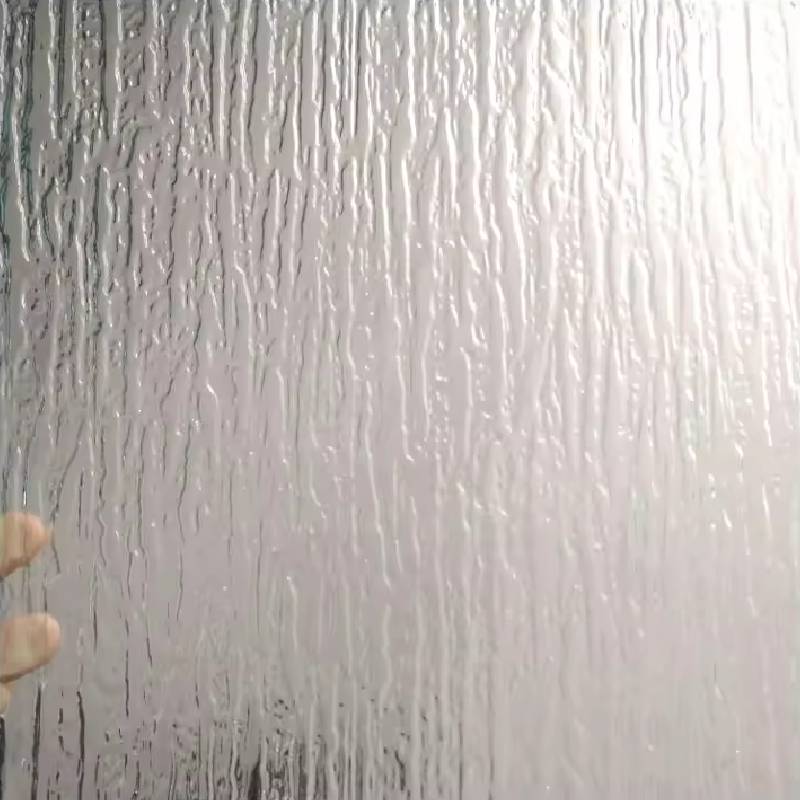Different Types of Tempered Glass Understanding the Varieties and Their Uses
Tempered glass, also known as safety glass, is a type of glass that has been specifically treated to increase its strength and thermal resistance compared to regular glass. This process involves heating the glass to high temperatures and then rapidly cooling it. The result is a material that is not only more robust but also less likely to shatter upon impact. In this article, we will explore the various types of tempered glass, their characteristics, and common applications.
1. Flat Tempered Glass
Flat tempered glass is one of the most commonly used forms of tempered glass. It is produced from large sheets and is widely employed in residential and commercial buildings for windows, doors, and facades. Its strength makes it an excellent choice for situations where safety is paramount, such as in glass balconies or glass railings. Flat tempered glass is available in various thicknesses and sizes, making it adaptable to different design requirements.
2. Laminated Tempered Glass
Laminated tempered glass consists of two or more sheets of tempered glass bonded together with a layer of polyvinyl butyral (PVB) or another interlayer. This type of glass offers enhanced safety, as it holds together even when shattered, greatly reducing the risk of injury from sharp edges. Laminated tempered glass is often used in applications requiring security and sound insulation, such as in storefronts, shower enclosures, and skylights. Additionally, it can provide UV protection and reduce glare, making it suitable for residential use.
3. Curved Tempered Glass
Curved tempered glass is a specialized variant that is designed to fit architectural features such as rounded walls and curved facades. This type of glass undergoes a similar tempering process as flat glass but is shaped during or after the heating phase. Curved tempered glass is prized for its aesthetic appeal and is commonly used in modern architecture, including glass walls, canopies, and storefronts. Its strength and flexibility make it a popular choice for creating striking design elements.
different types of tempered glass
4. Reflective Tempered Glass
Reflective tempered glass is coated with a thin metallic layer that reflects sunlight, reducing glare and heat gain while also increasing privacy. This type of glass is often used in commercial buildings where energy efficiency and aesthetics are priorities. The reflective qualities can help control indoor temperatures, leading to lower energy costs. Reflective tempered glass is commonly installed in high-rise buildings, offices, and some residential applications.
5. Low-E Tempered Glass
Low-E (low emissivity) tempered glass has a special coating that reflects infrared light while allowing visible light to pass through. This property makes it an excellent choice for improving energy efficiency in buildings, as it helps maintain a comfortable indoor temperature by blocking heat during summer and retaining warmth in winter. Low-E tempered glass is widely used in windows and facades of both commercial and residential buildings, contributing to the sustainability of modern architecture.
6. Fire-Rated Tempered Glass
Fire-rated tempered glass is specifically designed to withstand high temperatures and prevent the spread of flames and smoke during a fire. This type of glass is essential in buildings that require fire safety compliance. Fire-rated tempered glass can maintain its integrity for limited time frames, helping to provide occupants with additional escape time and safeguarding valuable assets. It is typically used in doors, partitions, and windows in commercial buildings and high-rise structures.
Conclusion
The diverse types of tempered glass each serve unique purposes in modern construction and design. Understanding the characteristics and applications of flat, laminated, curved, reflective, low-E, and fire-rated tempered glass is essential for architects, builders, and homeowners alike. As safety, energy efficiency, and aesthetic appeal continue to grow in importance, the demand for various types of tempered glass is expected to rise, paving the way for innovative architectural solutions and designs. Whether you are considering a renovation or constructing a new building, choosing the appropriate type of tempered glass can greatly enhance both safety and visual impact.
 Afrikaans
Afrikaans  Albanian
Albanian  Amharic
Amharic  Arabic
Arabic  Armenian
Armenian  Azerbaijani
Azerbaijani  Basque
Basque  Belarusian
Belarusian  Bengali
Bengali  Bosnian
Bosnian  Bulgarian
Bulgarian  Catalan
Catalan  Cebuano
Cebuano  Corsican
Corsican  Croatian
Croatian  Czech
Czech  Danish
Danish  Dutch
Dutch  English
English  Esperanto
Esperanto  Estonian
Estonian  Finnish
Finnish  French
French  Frisian
Frisian  Galician
Galician  Georgian
Georgian  German
German  Greek
Greek  Gujarati
Gujarati  Haitian Creole
Haitian Creole  hausa
hausa  hawaiian
hawaiian  Hebrew
Hebrew  Hindi
Hindi  Miao
Miao  Hungarian
Hungarian  Icelandic
Icelandic  igbo
igbo  Indonesian
Indonesian  irish
irish  Italian
Italian  Japanese
Japanese  Javanese
Javanese  Kannada
Kannada  kazakh
kazakh  Khmer
Khmer  Rwandese
Rwandese  Korean
Korean  Kurdish
Kurdish  Kyrgyz
Kyrgyz  Lao
Lao  Latin
Latin  Latvian
Latvian  Lithuanian
Lithuanian  Luxembourgish
Luxembourgish  Macedonian
Macedonian  Malgashi
Malgashi  Malay
Malay  Malayalam
Malayalam  Maltese
Maltese  Maori
Maori  Marathi
Marathi  Mongolian
Mongolian  Myanmar
Myanmar  Nepali
Nepali  Norwegian
Norwegian  Norwegian
Norwegian  Occitan
Occitan  Pashto
Pashto  Persian
Persian  Polish
Polish  Portuguese
Portuguese  Punjabi
Punjabi  Romanian
Romanian  Russian
Russian  Samoan
Samoan  Scottish Gaelic
Scottish Gaelic  Serbian
Serbian  Sesotho
Sesotho  Shona
Shona  Sindhi
Sindhi  Sinhala
Sinhala  Slovak
Slovak  Slovenian
Slovenian  Somali
Somali  Spanish
Spanish  Sundanese
Sundanese  Swahili
Swahili  Swedish
Swedish  Tagalog
Tagalog  Tajik
Tajik  Tamil
Tamil  Tatar
Tatar  Telugu
Telugu  Thai
Thai  Turkish
Turkish  Turkmen
Turkmen  Ukrainian
Ukrainian  Urdu
Urdu  Uighur
Uighur  Uzbek
Uzbek  Vietnamese
Vietnamese  Welsh
Welsh  Bantu
Bantu  Yiddish
Yiddish  Yoruba
Yoruba  Zulu
Zulu 

